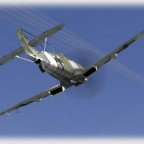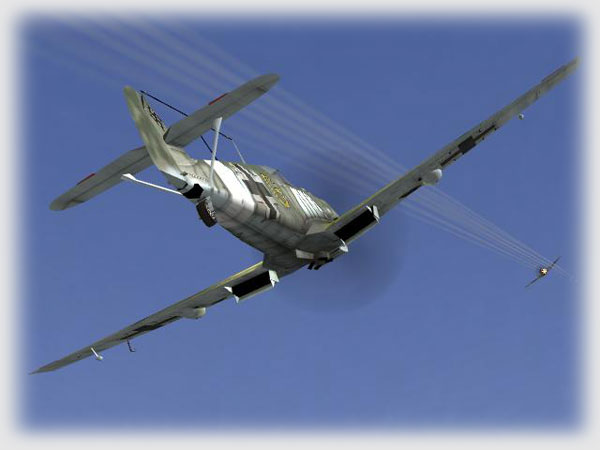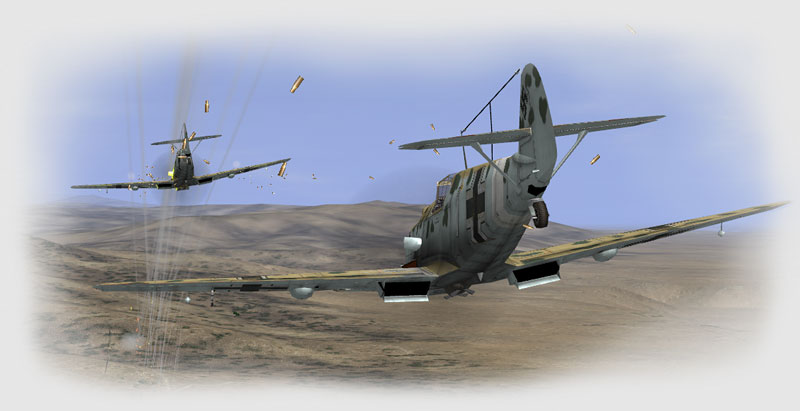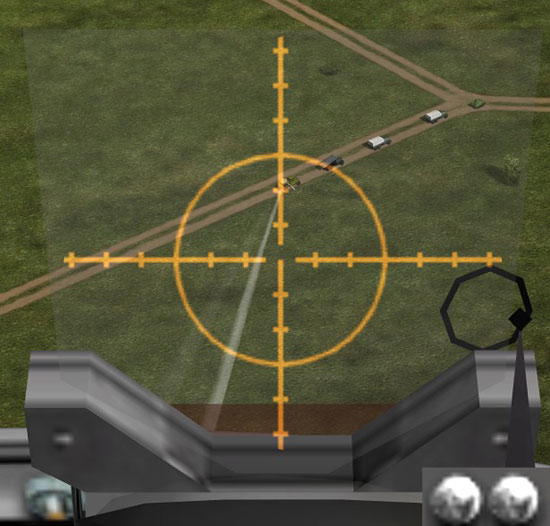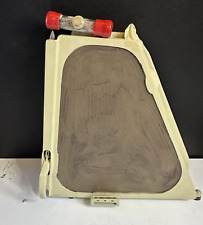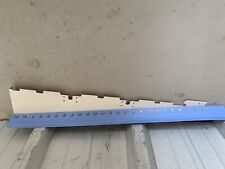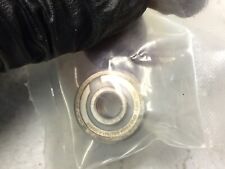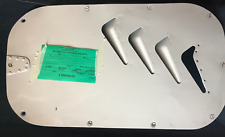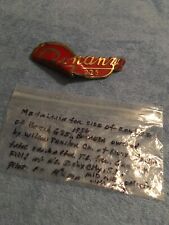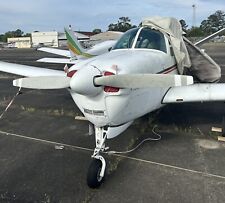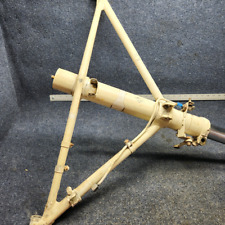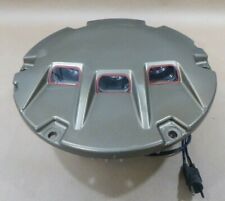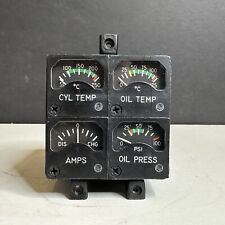Convergence
Convergence is simply the point where the rounds cross the center of the sight. It’s adjustable to suit the individual pilot, but the “standard” convergence is 300 meters.
The more rounds placed in a smaller area, the greater the damage.
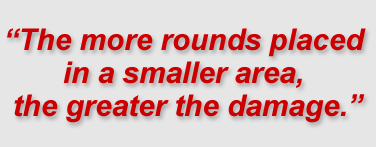 Most complaints about the ineffectiveness of wing mounted machine guns can be traced to hitting outside of convergence. Eight fifty caliber machine guns with rounds spaced ten to forty inches apart will punch a bunch of tiny holes in the wing of a target. Eight fifty caliber machine guns with all rounds striking in an area the size of a tea cup saucer will rip a huge single hole in a wing and snap control cables, make leaks no amount of self-sealant can quench, and even cause enough structural damage to break it clean off.
Most complaints about the ineffectiveness of wing mounted machine guns can be traced to hitting outside of convergence. Eight fifty caliber machine guns with rounds spaced ten to forty inches apart will punch a bunch of tiny holes in the wing of a target. Eight fifty caliber machine guns with all rounds striking in an area the size of a tea cup saucer will rip a huge single hole in a wing and snap control cables, make leaks no amount of self-sealant can quench, and even cause enough structural damage to break it clean off.
One twenty millimeter cannon round can damage a target; two in the same place can destroy or disable it outright.
Finding the right convergence is a matter of trial and error; I suggest that one looks at the distance of greatest chance of hit and adjust to that range. Many Aces in WWII did the exact same thing, some reducing their convergence down to 100 meters! The point is that if you’re consistently firing when the target is at 200 meters in range, change your convergence to match it.
Angle Off
Remember that we’re not shooting at where the target is, but where the target will be. Knowing the target’s difference in trajectory to your own is key to bringing the target into the right spot on the sight.
Here’s a blatant rip off of an RAF pamphlet published in 1943 showing the Angle Off of a FW-190. Note that it doesn’t have anything over thirty degrees, which should be a hint about when to fire with a reasonable chance of hitting. Download the chart below in .png format, click here (black & white) or here (color).
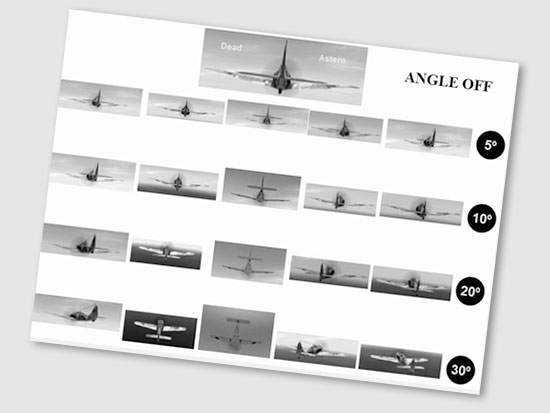
Once figuring out the Angle Off of a target is second nature, consistently developing the proper sight picture becomes a reality.
Most misses have the rounds falling behind the aircraft — where it was, rather than where it’s going — as folks misjudge the angle off and therefore place the target on the wrong part of the site.
This is also why most people have a better hit percentage on a rising target than on a level or diving target — they’re shooting at too little lead to angle off, but shooting closer in than convergence: the guns are pointing higher and compensating for the lack of proper lead.

